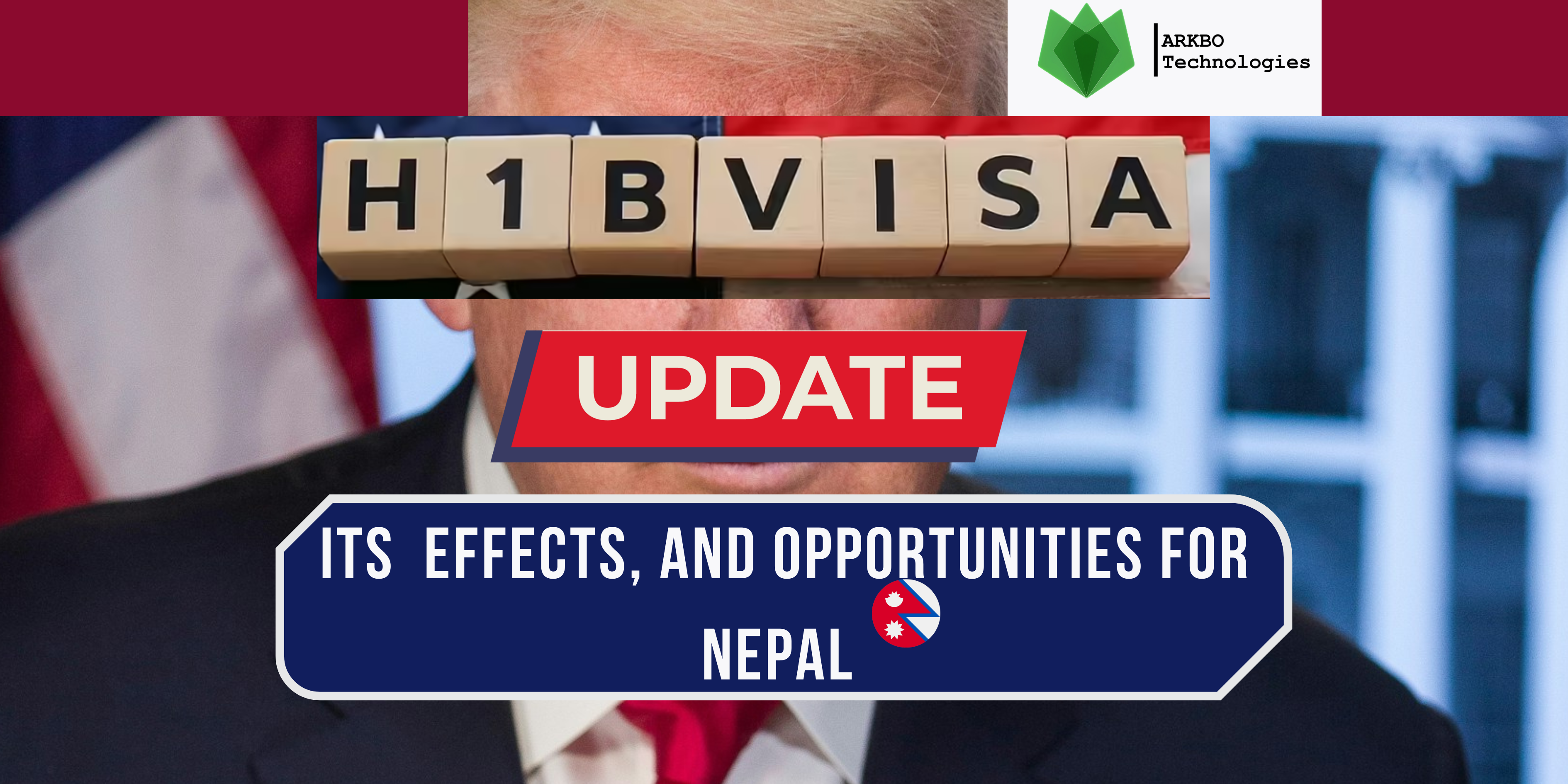
The USA has always been a melting pot and a land of opportunities for skilled tech professionals. For many, it has been a dream to work, earn, and even settle there. However, in 2025, President Trump, known for his strong stance on immigration, introduced major changes to the H-1B visa.
In this article, we explore these changes, their impact on international tech talent, and how they could create new opportunities for countries like Nepal.
The H-1B visa is a temporary work visa in the United States that allows U.S. companies to hire foreign professionals (such as engineers, scientists, coders, doctors, mathematicians, etc) with specialized skills, when they can’t find the right talent within the American workforce.
An H-1B visa is normally granted for a period of three years, with the possibility of an extension of up to six years.
On September 19, 2025, President Donald Trump signed a rule that requires American employers to pay $100,000 for every new H-1B visa. The latest price is a huge jump from the usual $2,000–$5,000. According to Trump, this decision can boost opportunities for domestic scientists or tech experts, as it will become a cheaper option for companies than hiring international faculty and staff.
The latest H-1B visa update was confusing at first, but officials clarified that it only applies to new hires. The fee hike does not apply to petitions filed before the new rule, petitions already approved, or people who already have valid H‑1B visas. Workers using existing approvals for visa stamping or reentry do not need to pay the new fee. However, if someone who has been traveling outside the U.S. and failed to obtain a visa stamp for a petition filed after September 21, 2025, they have to pay the fee
The H-1B visa update is set to affect workers from countries like India, South Korea, and China, creating uncertainty for their careers and families. In addition, Indians will be most affected by the new H-1B rule because they make up most of the visa holders, especially in tech and medicine. For many, this visa has been the main way to work and settle in the U.S. The change makes it harder for new Indian professionals and students to get those chances. It limits their career growth and global exposure.
With this new update, employers should reassess their staffing strategies. They should focus more on local hiring, carefully manage job role changes, and consider outsourcing where practical.
U.S. employers must also ensure fair pay, follow wage laws, honor union agreements, and give required notices if jobs are reduced. Further, they must update their handbooks, pay policies, and client contracts to avoid risks linked to higher visa costs or staffing gaps.
Innovation experts believe that the hike in this visa could have a significant impact on innovation as it limits access to skilled professionals in emerging technologies. American companies, particularly startups and smaller firms, face a serious innovation shortage. They often rely on specialized talent to develop new ideas, create advanced products, and drive technological breakthroughs.
With fewer experts available in the U.S, research and development could also slow down, delaying the introduction of new solutions and services. Over time, this could reduce the overall pace of innovation in critical industries and make it harder for U.S. companies to maintain their competitive edge in the global tech industry. Another possible effect is that businesses can explore global talent and cost-effective solutions and adopt outsourcing.
The recent update on the H-1B visa by President Trump is certainly a big shock to the world. Due to this decision, American companies hiring top tech talent from countries like India have to bear massive expenses. As an affordable hiring option, many firms are reconsidering how they hire internationally. This is where Nepal comes in as a promising option.
Nepal has a young, educated, and tech-savvy population ready for international exposure. The country’s IT and digital sectors are expanding fast, producing talented software developers, designers, and tech specialists familiar with modern technologies. Furthermore, many of these professionals can quickly adapt to different IT and STEM projects.
Compared to hiring in the U.S. or other tech-heavy countries, Nepal offers skilled talent at an affordable price. By outsourcing to Nepal, American companies can get quality work at significantly less cost. This combination of affordability and talent makes Nepal an attractive option for businesses looking to maintain efficiency while controlling costs.
Final Thoughts
The H-1B visa allows U.S. companies to hire skilled foreign professionals in technology, engineering, and the sciences when local talent is limited. A recent change by the Trump administration requires employers to pay $100,000 if they want to hire international talent. This decision can be fruitful for American workers, but it creates uncertainty for international professionals and the companies that rely on them.
At the same time, the change highlights opportunities for global collaboration. Nepal, with its young, educated, and skilled tech workforce, offers top-notch and cost-effective tech solutions. Further, partnering with Nepali tech companies can help American companies to maintain their work quality and efficiency while supporting a growing international talent base.